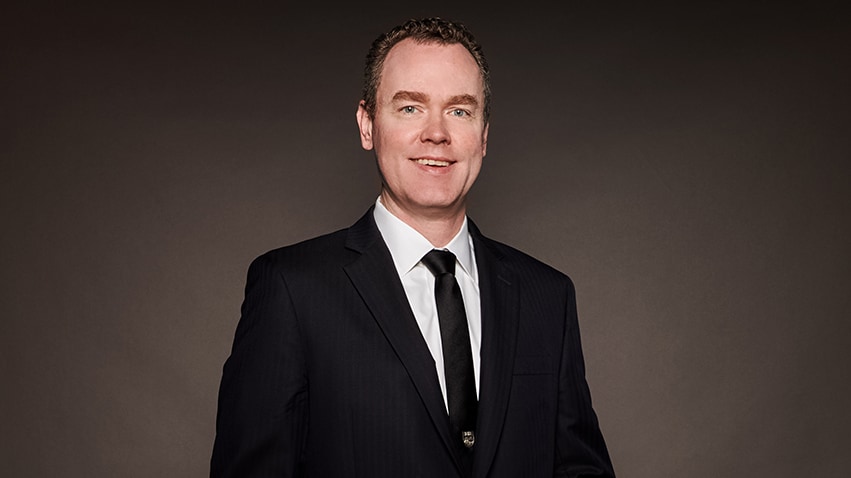- Who We Serve
- What We Do
- About Us
- Insights & Research
- Who We Serve
- What We Do
- About Us
- Insights & Research
Long and Variable Lags
The economy can grow through policy changes.
Milton Friedman’s quip that “monetary policy works with long and variable lags” has proven its timelessness in this cycle, as healing inflation has taken perseverance. But monetary policy is now in a relatively steady state. The Federal Reserve has entered a holding pattern, awaiting more data on inflation and employment to calibrate their next movement. Economic indicators offer little reason to make any rash decisions.
The greater uncertainty is coming from elsewhere in Washington, where a series of significant policy changes are being made across a number of fronts. The consequences of these decisions may manifest unpredictably.
Uncertainty can be a headwind to growth, but the U.S. economy has shown great resilience in recent years despite facing many challenges with little precedent. Through 2026, the balance of growth forces should remain positive. However, elevated inflation risks will require patience by the Fed.
Following are our thoughts on recent data and developments.
KEY ECONOMIC INDICATORS

Influences on the Forecast
- The Employment Situation Summary for January showed a labor market that remains in good balance. Job gains of 143,000 reflect a sustainable pace, while the unemployment rate fell by one-tenth to 4.0%. Average hourly earnings have grown 4.1% over the past year, a perpetual challenge to bringing down the rate of services inflation.
- The consumer price index (CPI) report for January was disappointing, with large month-over-month increases across most categories pushing the annual rate of inflation back up to 3.0%. Excluding food and energy, core CPI gained 3.3%. While the Federal Reserve does not set its 2% target based on CPI, these readings are not consistent with achieving the 2% goal in the price index on personal consumption expenditures. January readings tend to be noisy, with annual price adjustments and seasonal effects that are difficult to measure; we would not call this the beginning of a reflationary trend just yet..
Questions about the potentially inflationary effects of new trade and immigration policies are topical, but the January measures would not yet reflect them. - At their January meeting, the Federal Open Market Committee (FOMC) held rates unchanged after three consecutive cuts. The statement and press conference accompanying the decision offered no clarity as to the length of the pause. Chair Powell was asked many provocative questions about political matters, but he stayed out of the fray.
- With employment holding steady and inflation running above target (with risks to the upside), we must contemplate a slower cadence for the Federal Reserve’s rate decisions. The prospects of higher costs from tariffs and trade realignment, as well as a tighter labor market, support a prolonged pause. The FOMC will want to observe the economic consequences of policy changes before proceeding with its easing program. We now foresee only three cuts between now and the end of next year, starting in September.
- U.S. gross domestic product (GDP) grew 2.3% at an annualized rate in the fourth quarter, for a full-year gain of 2.5%. Again, consumer spending showed strength, with gains in consumption and residential investment offsetting some weakness in business investment and inventory accumulation. As long as the labor market holds its strength, we believe consumers will continue to support growth.
- We are entering a critical interval for budget negotiations in Washington. Funding for government operations will expire in the middle of March, and Congress is beginning work on legislation that would extend expiring tax cuts. Groups within the administration are working rapidly through the finances of many departments and ordering reductions in headcount. Despite the plethora of moving parts and a somewhat chaotic environment surrounding fiscal policy, Treasury bond yields have stayed rangebound.
Related Articles
Meet Our Team

Carl R. Tannenbaum
Chief Economist

Ryan James Boyle
Chief U.S. Economist

Vaibhav Tandon
Chief International Economist
Subscribe to Publications on Economic Trends & Insights
Gain insight into economic developments and our latest forecasts for the United States.
Information is not intended to be and should not be construed as an offer, solicitation or recommendation with respect to any transaction and should not be treated as legal advice, investment advice or tax advice. Under no circumstances should you rely upon this information as a substitute for obtaining specific legal or tax advice from your own professional legal or tax advisors. Information is subject to change based on market or other conditions and is not intended to influence your investment decisions.
© 2025 Northern Trust Corporation. Head Office: 50 South La Salle Street, Chicago, Illinois 60603 U.S.A. Incorporated with limited liability in the U.S. Products and services provided by subsidiaries of Northern Trust Corporation may vary in different markets and are offered in accordance with local regulation. For legal and regulatory information about individual market offices, visit northerntrust.com/terms-and-conditions.